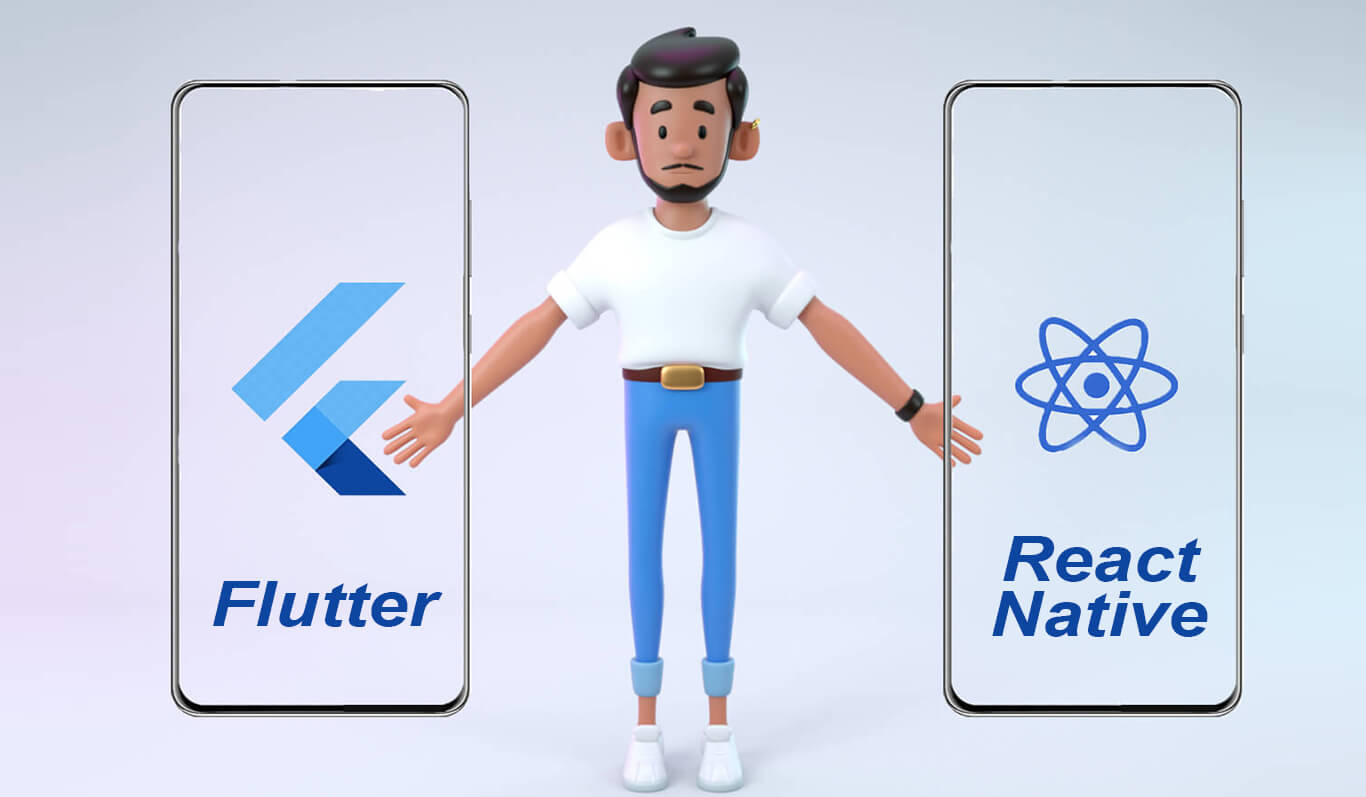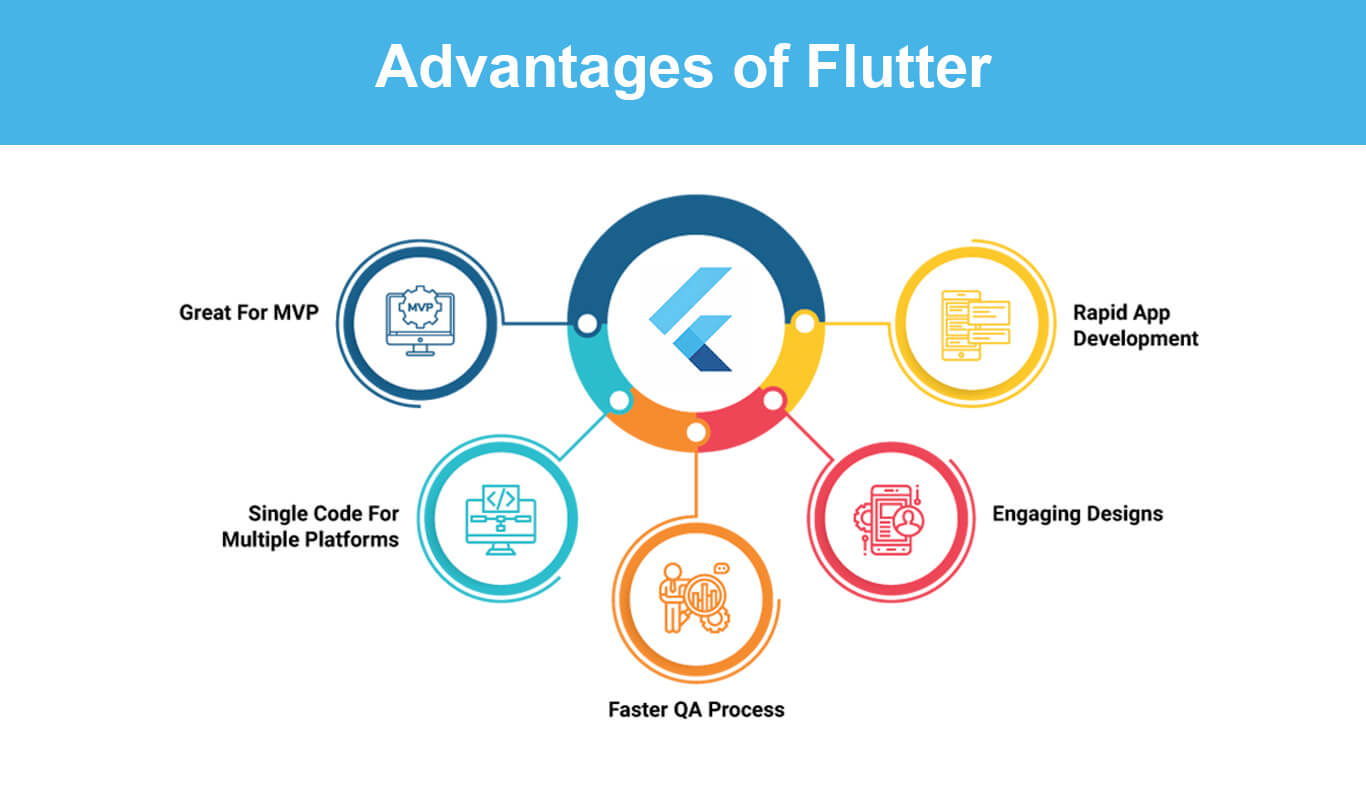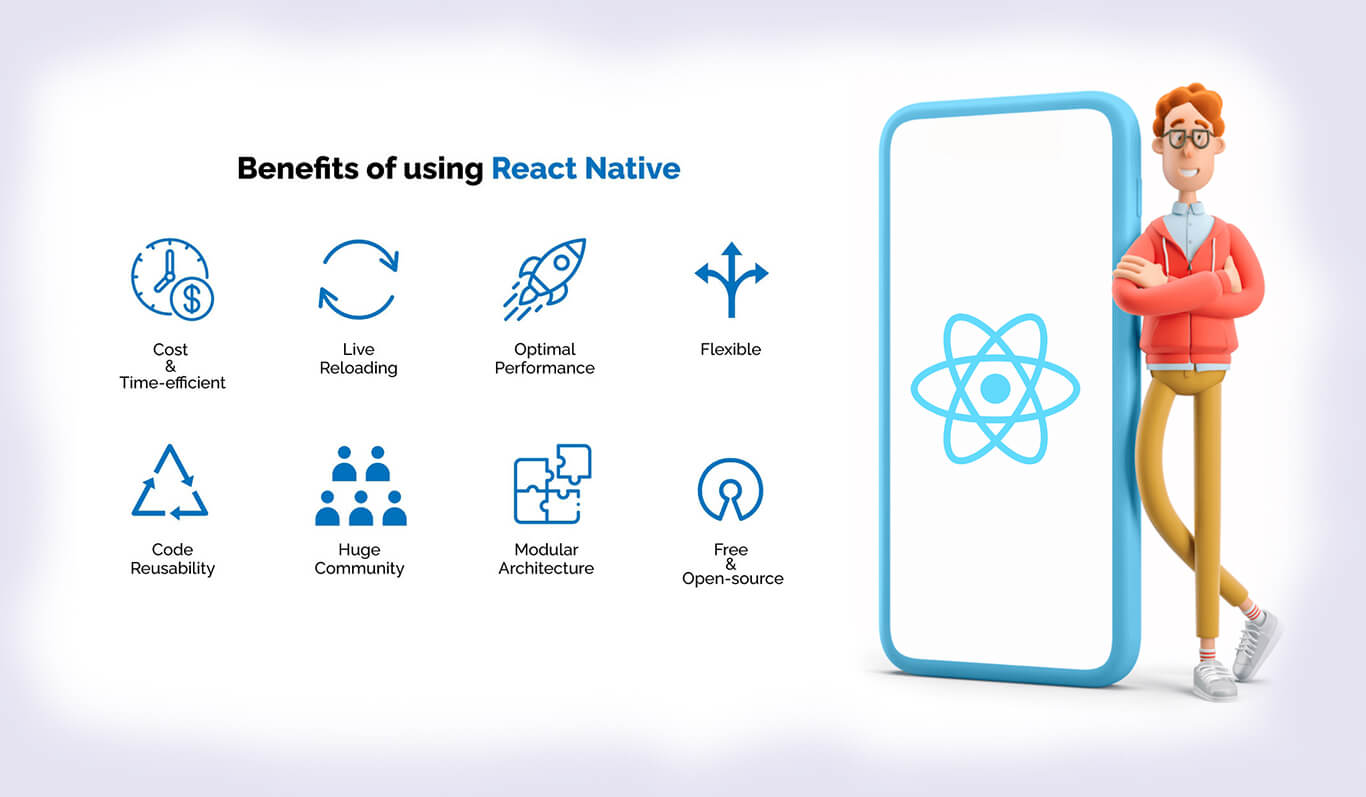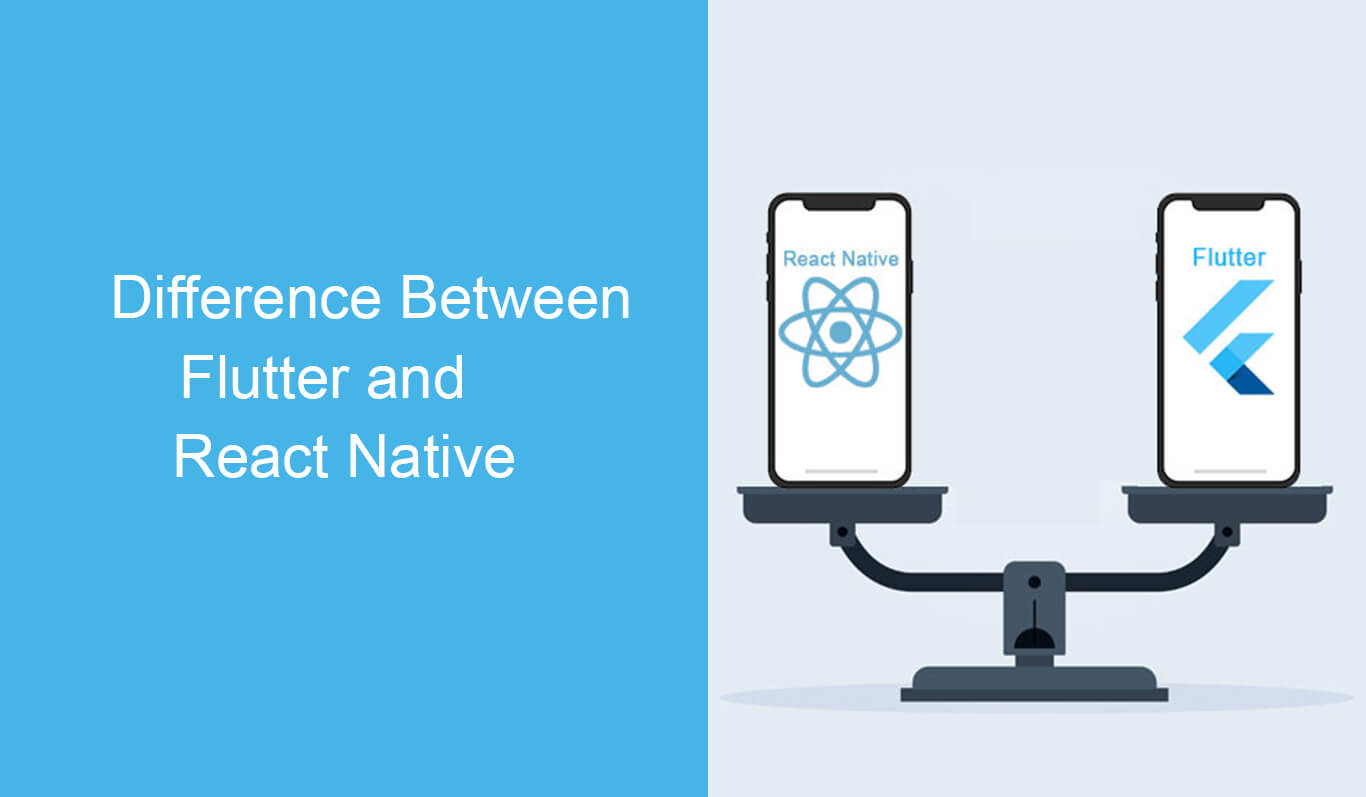Flutter vs React Native: Which is best for your app in 2023?

Businesses are looking for faster and cheaper mobile development solutions in 2023. Cross-platform mobile app development has a lot of advantages, like a single codebase, lower costs, and bigger markets.
There are two major market players in Flutter and React Native, but we at Neetable take the approach that works best for the solution, whether it's native or cross-platform.
The most common question we get from business owners is, ‘Which framework will work best?' 'Should I focus on design?’ or ‘Which technology will get my product to market faster?’ and so on.
The purpose of this article is to help you determine which framework will work best for your app idea by comparing Flutter and React Native.
Flutter and Its Uses in App Development

What is Flutter?
An open-source framework from Google that enables the creation of desktop, mobile, and web apps from a single code base.
It's based on Dart, an object-oriented programming language. For experienced developers who know Java and C#, it's easy to learn.
Reactive programming is the basis of this architecture.
Fast, attractive, and customizable widgets are derived from Flutter's own high-performance rendering engine.
The widget experience makes Flutter apps look gorgeous.
What is Flutter used for?
Flutter lets you make cross-platform apps. A single codebase makes it easy to build and deploy natively-compiled apps for mobile (iOS, Android), web, and desktop.
Here's where Flutter's web support comes in handy:
- With Flutter, users get seamless PWAs, including installation, offline support, and a custom-made UX.
- Single-page applications (SPA) load once and transmit data through the internet.
- For existing Flutter mobile apps, browser-based delivery is supported.
What are some popular apps made with Flutter?
- Xianyu app by Alibaba
- Google Ads app
- Klasterme
- Groupon
- Phillips Hue
- Lunching
- Reflectly
- Hamilton
React Native and Its Uses in App Development

What is React Native?
React Native is a popular JavaScript-based mobile app framework that allows you to build natively rendered mobile apps for iOS and Android. React Native uses the same fundamental UI building blocks as regular iOS and Android apps. But it enables building the blocks together, using JavaScript and React. As with widgets in Flutter, React Native uses components.
What is React Native used for?
React Native is an effective framework for:
- Cross-platform development
- It allows web developers to create robust mobile applications using their existing JavaScript knowledge.
- It offers faster mobile development, and more efficient code sharing across iOS, Android, and the Web, without sacrificing the end user’s experience or application quality.
What are some popular React Native apps?
- Tesla
- Walmart
- Discord
- Bloomberg
What is the Difference Between Flutter and React Native?

What is the best option? Understanding the features and adjusting them from a business perspective is crucial, rather than simply following trends.
Programming Language
Flutter
The Dart programming language was created by Google in 2011 for Flutter. In comparison to React Native, Dart is a bit faster to process code. Dart's syntax is elegant. However, object-oriented concepts can be challenging to learn. As a result, fewer developers know Dart.
React Native
From website designers to software engineers, JavaScript is one of the world's most popular programming languages. You can find a lot of tutorials thanks to JavaScript's huge developer community. This framework makes it easy to save time and money with its pre-built modules.
Architecture
Flutter
Using Skia, a 2D graphics rendering library, and the Dart language virtual machine, Flutter makes use of a platform-specific shell for executing code. Dart's source code is compiled beforehand, creating native code. Certainly, this is an elegant and fast solution that integrates seamlessly with both the iOS and Android operating systems, avoiding the need to create programming bridges.
React Native
As the framework is based on the Flux architecture from Facebook, it requires a JavaScript bridge to be integrated. Flutter and React Native differ greatly as a result of this inconvenient fact.
Installation
Flutter
You must download the binary for your chosen platform from GitHub in order to install this framework. If you're installing for macOS, you will need to download and add an additional.zip file to your PATH variable. It is this difference that makes Flutter slower and harder to install than React Native.
React Native
The node package manager can be used to install the software seamlessly if you have a good understanding of JavaScript. Neither Flutter nor React Native has a one-line installer or a native OS package manager. However, Flutter installation requires an extra step. Flutter loses out to React Native in this comparison.
UI and Development API
Flutter
Using a custom development language is what makes this framework so special. As a result, Flutter or React Native are very different in terms of UI development. The widgets are all customized. This might be its biggest advantage over React Native, since the widgets are automatically aligned with Material Design for Google and Cupertino for Apple.
React Native
Third-party or custom components are used in React Native. As a result, the code can look patchy. React's JavaScript language does have some advantages, so don't get too hung up on this. However, if we compare Flutter and React Native, Flutter definitely wins.
Development Time
Flutter
Developers aren't as familiar with Dart. The hot reload feature is great, but it doesn't work with a lot of text editors and IDEs, which adds more time.
React Native
JavaScript is what makes Flutter different from React Native. JavaScript makes development easier for web developers and designers. Any IDE or text editor works for developers. Development speed is unbeatable. Hence, there's no denying React Native is better in this regard.
Code Reusability
Flutter
It's a lot easier to reuse Flutter's code. Developers can define an arbitrary tree of UI widgets and reuse the logic. Flutter wins this comparison thanks to its elegant interface.
React Native
You'll only have to write code once and it'll work on every platform. But compatibility isn't always guaranteed. Sometimes developers have to load a different set of components to make their apps work on every platform. Changes like these can slow down your development and cost you more.
Quality
Flutter
Flutter has lots of integrated quality control testing options, like testing individual widgets, running integration tests, etc. There's also lots of detailed documentation on testing.
React Native
The framework doesn't have any integrated unit tests. There are third-party frameworks like Jest and Detox that can compensate for this. Despite being add-ons, they are not too difficult to integrate.
Community Support
Flutter
In a comparison of ecosystem size, Flutter always loses. Despite that, it's growing fast.
React Native
JavaScript's programming abilities have made it popular since 2015. Currently, there are more than 10,000 developers, a vast online tutorial database, and developer conferences happening all over the world.
DevOps Support
Flutter
Flutter lacks community support, but makes up for it with documentation. In this documentation, the framework has a whole section on CI/CD and several links to make it easy to set up. It is a good place to start although there's no way this can replace deep developer community support. As its usage grows in the future, it will become more popular.
React Native
Thanks to Facebook, React Native has tons of third-party libraries, help guides, and support. With React Native, you have the best Dev/Ops support. It's also popular with developers.
Performance
Flutter
A key component of Flutter's performance is the use of 60 frames per second (FPS) for animations - a clear indication of its speed. Also, the fact that Flutter is compiled directly into native ARM code on Android and iOS further improves performance. In spite of the fact that the program is faster, it is significantly bigger and has a greater number of native components. Although, extensive documentation is available describing how to reduce the size of files.
React Native
Due to its elegant and powerful design, any Flutter vs React Native comparison will always favor Flutter. This is one of the main reasons why Flutter is becoming a popular trend. When you use JavaScript bridges and plug-and-play modules, it takes a long time. Even so, React Native apps aren't slow.
Release
Flutter
With Flutter, you can get your app on the App Store or Google Play. There's official documentation for both fastlane release and deployment on iOS and Android. You can deploy Flutter apps directly from the command line.
React Native
Releases in React Native are standard, but they're all manual. You need third-party tools to automate deployments. Releases are labor-intensive, and that slows down development.
Documentation
Flutter
The documentation is what makes Flutter different from React Native. Dart's native documentation is great, and Flutter has invested a lot. You can easily transition from another framework or optimize a current project with their documentation guides. Graphics and videos are available directly within the framework for developers to use.
React Native
Documentation for most projects is often sourced from third parties. When you compare Flutter and React Native on documentation, this is a major complaint against it.
The Future of Flutter and React Native
For a cost-effective and time-saving method of developing mobile apps, Flutter and React Native are both great choices. Choosing the right framework depends on the business requirements, type of app, etc.
You can count on us to build apps for multiple platforms. At Neetable, we work with both Flutter and React Native frameworks. Please let us know if you're interested, and we will reach out to you to discuss details. Get in touch with us if you are interested in hiring react developers or hiring Flutter developers.
FAQs
1.Can Flutter beat React Native in terms of speed?
Definitely. React Native JavaScript layer shows lower performance than Dart's native compiler, which produces different binary codes for every platform.
2.React Native vs Flutter: Which is better?
As far as performance, features, and portability are concerned, Flutter is better. However, React's popularity makes it a viable competitor because its developers are more readily available.
3.Is Flutter going to replace React Native?
The main advantage of Flutter is that it is developed by Google and has excellent documentation. Nevertheless, React Native is more popular with developers. Choosing between Flutter and React Native depends on the use case and the type of app, and you should consider both carefully.
Request a Quote
Categories
Popular posts
Best Practices for Software Product Engineering Every CTO Should Implement
2023-14-18How to Build Your Own On-Demand Carpooling App Services?
2023-08-25How to Start an On-Demand Fuel Delivery Business: A Comprehensive Guide
2023-07-28Empowering Miners: How Fleet Management Apps are Transforming the Mining Industry?
2023-07-21A Complete Guide to Develop a Food Delivery App for Restaurants in 2023
2023-07-08Mobile Apps Transforming the Travel Industry: A Game-Changer in Travel Planning and Experience
2023-07-07
